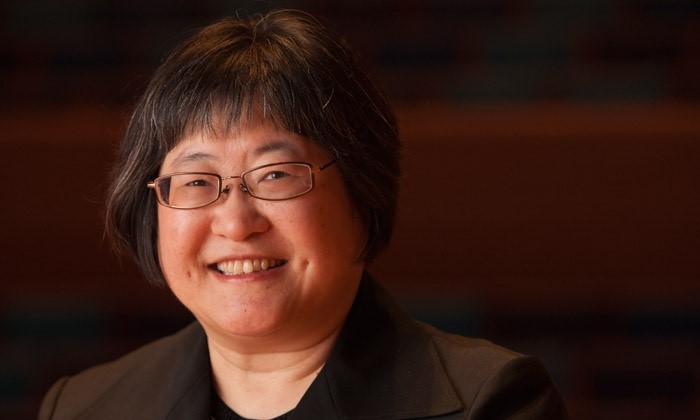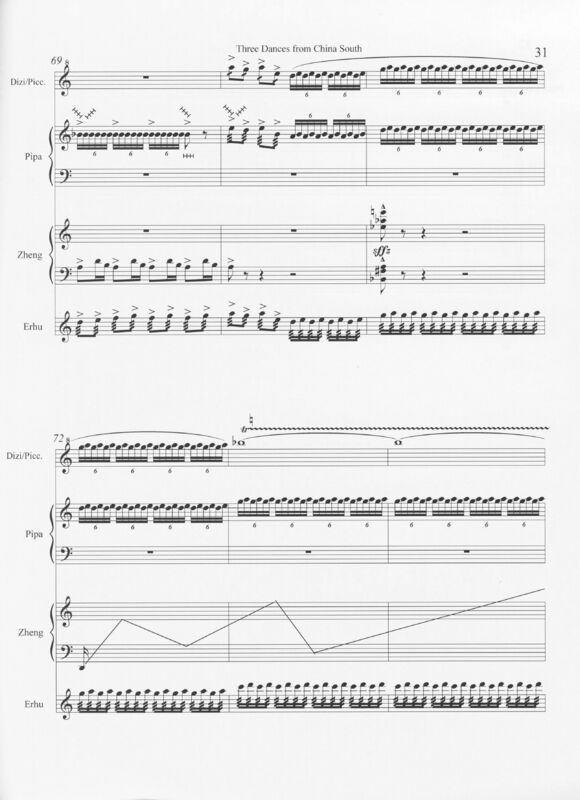Three Dances from China South
Item
-
Score title
-
Three Dances from China South
-
Composer
-
Chen Yi
-
Program note
-
My chamber work, THREE DANCES FROM CHINA SOUTH, was commissioned by Music From China to celebrate its 30th anniversary, and is scored for Chinese traditional instruments dizi, erhu, pipa, and zheng. The commission was made possible by the Chamber Music America Classical Commissioning Program, with generous funding provided by The Andrew W. Mellon Foundation and the Chamber Music America Endowment Fund. The world premiere was given at Weill Recital Hall at Carnegie Hall in New York City, on November 21, 2014. THREE DANCES FROM CHINA SOUTH is dedicated to Susan Cheng, the founder and executive director of Music From China.
There are three movements in the work. The material in the first movement, Lions Playing Ball, is drawn from a tune played in the accompanying ensemble for a folk dance of the same name, which comes from the Chaozhou region of Guangdong province. The image of the folk dance is vivid and entertaining. The movement includes several variations on the theme. The variation methods are inspired by the various rhythmic patterns used in traditional ensemble playing. The melodic material features a special mode with a tritone interval taken from the folk tune. There are also lyrical sections with polyphonic layers in the variations.
The music in the second movement is inspired by the folk Bamboo Dance, which is popular with Li minority people from Hainan Island in the south. This age-old folk dance is historically performed for ritual ceremony and harvest celebration, and features pairs of people holding the ends of long bamboo rods and clapping them on the floor loudly in a stable pulse, between which dancers dance to musical rhythms and ensemble patterns. A musical motive with a jumping interval and articulation is used throughout the movement.
The third movement is called Lusheng Dance. When I witnessed a folk dance performance of the Dong minority people in Guangxi province in the 1980's , the exciting scene inspired me to imitate the large lusheng ensemble playing style in my ensemble of four Chinese instrumental musicians without using the sheng (a wind instrument with metal pipes that is popular in concert music, and similar to the folk lusheng). On top of the rhythmic patterns, I imitated a two-voice folk song of Zhuang minority people in the same province. The melody is played by the leading erhu and dizi.
 Chen Yi
Chen Yi

